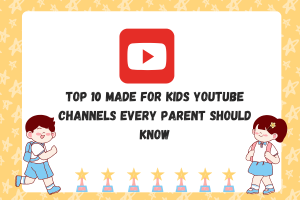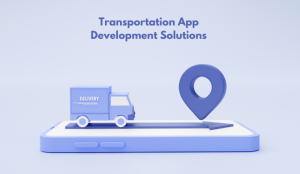What is a Progressive Web App? Why do we need one? How can we build one?

Netflix, Pixlr, Facebook or Google Docs, think of an app you use every day and guess what! It falls under the category of Progressive Web Apps.
Looking and feeling just like any other regular app, they have the capability for the users to access every feature and information without even downloading the mobile app, Because the technology used is such, which can perform like an app, right in the browsers of the users. Let us now talk about all the What, Why and How’s of the progressive web apps.
What is Progressive Web App?
The progressive web apps or the PWA’s are built with highly evolved API’s, and they can be delivered to anyone, anywhere, on any device with a single codebase.
They are totally reliable, and the ease of installation is something that keeps the user’s content.
Statistically speaking, the progressive web apps have much higher reach and its abilities are higher than regular standard web pages and native apps, which makes it multiple times more convenient to use than the rest.
They are capable of being started even on a very flaky internet connection also, at times, with some high-level progressive web app development company, they can be accessed offline as well.
These are highly responsive and take a blink of an eye to interact with users, which enables the users to be hooked to them for a longer duration.
Their ease of installation is commendable; they work on a single tab in a window and can be downloaded directly from the browser search engine.
The users can very easily log in with their credentials and switch between the devices without any disruptions. Facilities like saving keyboard shortcuts make them exceptionally user friendly.
Why do we need the progressive Web App?
With the changing intricacies of web technology, PWA development comes as a definitive sigh of relief as they are very easy to maintain when compared with the native apps, the possible reason could be the developers taking advantage of a way too large web ecosystem, community and plugins.
Mobile app development has its drawbacks and complications in not just creation, but also in maintenance, on the contrary, the PWA has the benefit of extracting all the relevant and user-friendly characteristics of a mobile app which increases and improves both; app performance and user retention.
The PWA’s are very secure, that too by default because they are designed in a way to serve over any other regular HTTPS network.
Also, they are designed to prevent snooping as they are helping through TLS, and this makes to another essential reason as to why the PWA’s are becoming more important and needful for us.
The power of the URLs has finally been put to use with them, and the operating system’s User Interfaces’ re-engagement can be accessed.
The PWAs are fresh and well up to date.Although it is recommended that the potential users and their needs should be identified by those involved in mobile app development before deciding about creating a PWA, many experts do argue that going ahead with PWAs will not be of any harm for businesses.
How to create your own PWA?
PWAs are very easy to develop and build. Certain websites also have tutorials on building them as fast as in less than ten minutes.
While most of the time the availability of the latest version of Chrome (74 or later) is recommended, along with the knowledge of HTML, JavaScript, WebApp Manifest, ChromeDevTools and CSS.
Let us explore the basic steps to creating your own PWA.
- The very first step, starting with Markup is the traditional web application development. Markup is done using the knowledge of HTML. It is not a very complex development as most of the commands are given using the ‘main’ tag, followed by the ‘nav’, ‘div’ and the ‘.container.’ control commands.
- Once the Markup culminates, the developer can proceed with the process of styling with the help of CSS. To prevent the default behaviour, some resets need to be done, and in the initial phase, the developer can begin with importing the fonts, which is done most of the time while creating PWA. Limiting the ‘main’ elements maximum width to make it look desirable and attractive on a large screen should be constrained to ‘900px’.
- With CSS, other features like making the cards of the PWA responsive, shadow effects, and preventing images from stretching, can be added as well.
- After winding up with CSS, the developer shall proceed with JavaScript, which is mostly used to create an array of cards with images and names. But the final output needs to be awaited until the Document Object Model Content finishes loading itself.
- After completing this process, one can proceed to work on the web app manifest, which is a very preliminary JSON programming file, used as a browser informant for your web app. The web app manifest is essential to provide instructions to the PWA about the way it shall behave on the desktops and mobile phones of the users when it is installed. It also functions to show the ‘Add to Home Screen’ Command prompt in both, the PWA and the native app. It is also used to add finishing touches like background color, theme color and orientation.
- Finally, the PWA can be completed with a few more steps like adding caches and registering the service worker. Although the steps might sound easy to do and they are, but every detail must be adhered to with complete precision.
Conclusion
Now that you have gained an in-depth understanding all about PWAs and have realized its growing importance, you do need them more proactively.
[Prefer Reading:” custom web application development“]
Do not wait longer, instead indulge yourself in having some fun developing your own basic PWA and keep adding more advanced features to it as you progress! It gradually can be incorporated in your life in more ways than you can imagine.
Author Bio
Tarun Nagar is the Founder & CEO of Dev Technosys, a global ranking mobile application development company USA. With 10+ years of experience of enabling then Start-ups which are now global leaders with creative solutions, he is differentiated by out-of-the-box IT solutions throughout the domain. He is known for his visionary qualities and adaptability for technology and trends, passionate as he is in every aspect dedicated to making IT simple, accessible and approachable for business enterprises.






